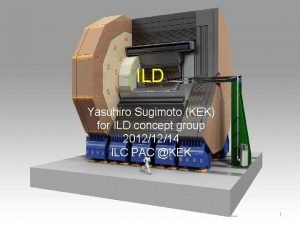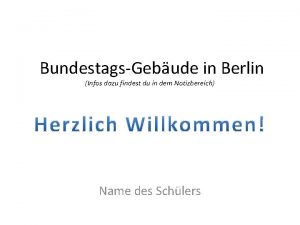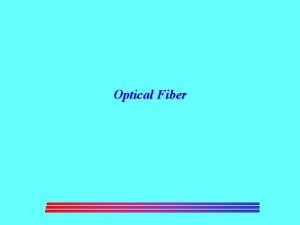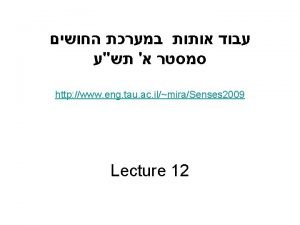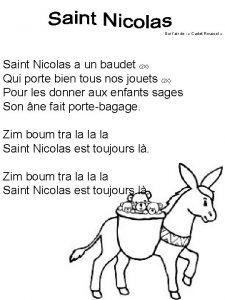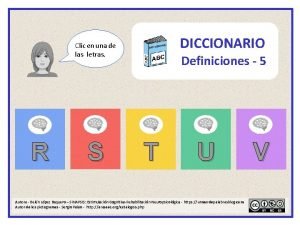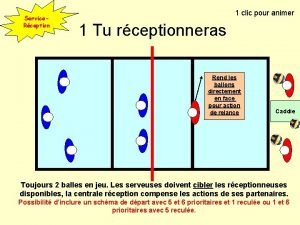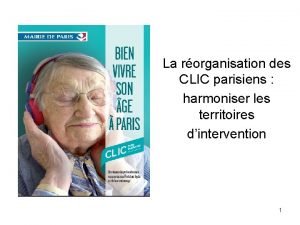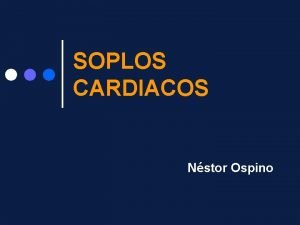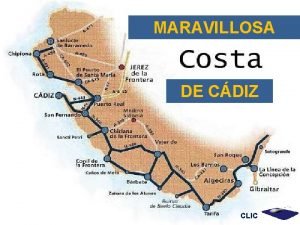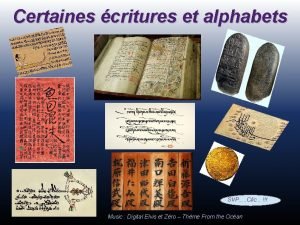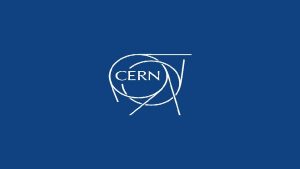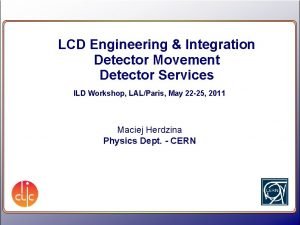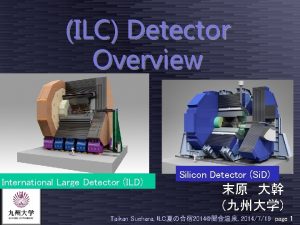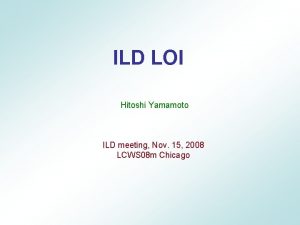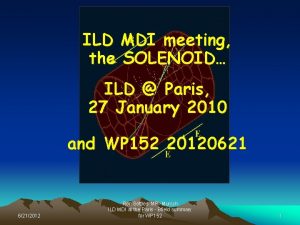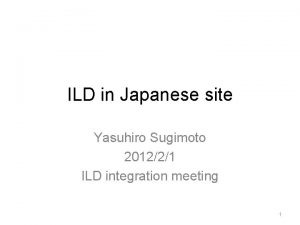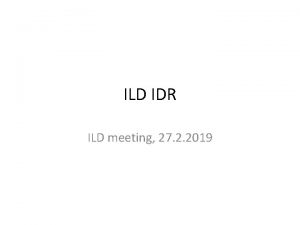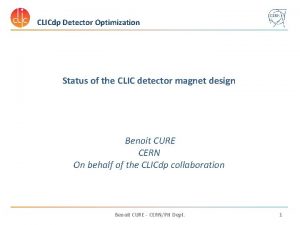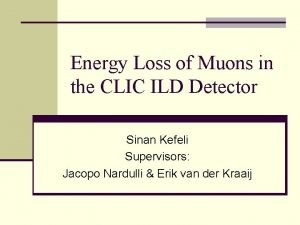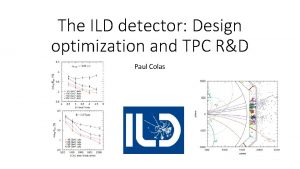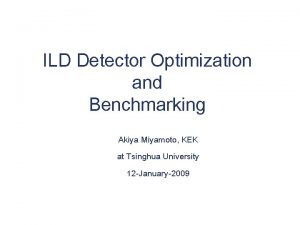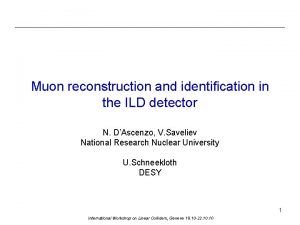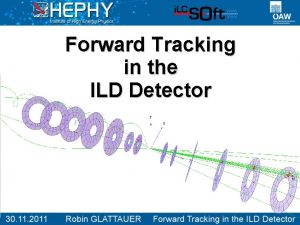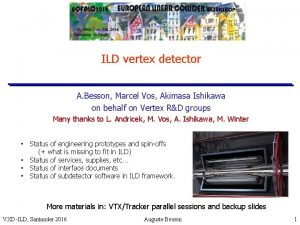ILD and Si D Detector Concepts for CLIC





















- Slides: 21

ILD and Si. D Detector Concepts for CLIC Presented at IWLC 2010, Geneva + Update October 25, 2010 Christian Grefe CERN, Bonn University

Outline • Required changes • Vertex detectors and forward region • Calorimeters • MDI • Status of detector models • CLIC_ILD • CLIC_Si. D Detector models presented are not yet fully finalized for the CDR Christian Grefe – October 25, 2010 Page 2

Vertex Detector & Forward Region • Crossing angle: 20 mrad (14 mrad @ ILC) • Beam-beam interactions produce photons and e+e- pairs • coherent pairs with high energies and low angles, leave the detector through the beam pipe • incoherent pairs (~300 k per BX) with high angles and low energies per particle, can be confined by solenoid field • Move beam pipe and first vertex layer to ~30 mm to reduce direct hits from pair background • Increase outgoing beam pipe radius to 10 mrad (rmin Beam. Cal) • Allow space for intra-train-feedback-system and kickers between Beam. Cal and QD 0 André Sailer Christian Grefe – October 25, 2010 Page 3

Calorimeters • Need good jet energy resolution up to Te. V jets • increase HCal depth to contain energetic showers • keep coil size reasonable (cost & feasibility) HCal depth studies with Pandora PFA (see talk by Angela Lucaci-Timoce) tungsten HCal Optimization of sampling fractions in steel or tungsten HCal (see talk by Peter Speckmayer) ~7. 5 λi in HCal, barrel: 75*1 cm W, endcap: 60*2 cm steel Christian Grefe – October 25, 2010 Page 4

MDI • QD 0 has to be stabilized with nm precision at CLIC • Has to be as close as possible to IP to gain maximum luminosity • Support QD 0 from tunnel with a stable support tube Hubert Gerwig Significant cut into acceptance of HCal and Muon system: • rmin HCal: ~50 cm (support tube) • rmin Muon System: ~70 cm (support tube + anti solenoid) Christian Grefe – October 25, 2010 Page 5

CLIC_ILD Numbers Nicolas Siegrist Christian Grefe – October 25, 2010 Page 6

CLIC_ILD in Mokka • Based on ILD 00 (LOI detector model) • Available with next Mokka release as CLIC_ILD_CDR André Sailer Christian Grefe – October 25, 2010 Page 7

CLIC_ILD Vertex Detector • 0. 6 mm Be beam pipe with rmax = 30 mm • 3 double pixel layers in barrel zmax = 100 mm • 3 double pixel disks in endcap • 20*20 µm² pixels with analog readout (σ = 2. 8µm ) • 2*50 µm Si + 134µm Carbon support per double layer (0. 18% X 0) Talk on optimization study for CLIC vertex and forward tracking region by Dominik Dannheim Christian Grefe – October 25, 2010 Page 8

CLIC_ILD Forward Region • Moved Lumi. Cal behind ECal and increased radius to avoid gap, increased to 40 layers ECal Anti Solenoid HCal Beam. Cal • Removed LHCal • Moved Beam. Cal as close as possible to the IP to allow for kickers and intra-train-feedbacksystem, increased to 40 layers QD 0 Lumi. Cal • Pair background levels in Vertex Barrel introduce more material into conical beam pipe Christian Grefe – October 25, 2010 Preliminary! see talk on beam-beambackground @ CLIC by André Sailer Page 9

CLIC_ILD Tracker • 4 T solenoid field • TPC as main tracking device • changed cathode: removed air gap and use 100 µm Mylar + 10 µm copper on each side • Si strip layers inside and outside of the TPC (2 layers SIT & SET, σr-φ = 7µm, σz = 50µm ) • Si strip layers behind TPC endcap (ETD, σx, y, z = 7µm ) • 5 forward tracking disks (FTD, Si stereo strips, σr-φ = 7µm, σr = 50µm ) Points with error bars: Mokka Dominik Dannheim Christian Grefe – October 25, 2010 Page 10

CLIC_ILD Calorimeters • ECal (8 sides) • Absorbers: • 20*2. 1 mm tungsten absorber layers • 10*4. 2 mm tungsten absorber layers • Active: • 3. 15 mm gap size (0. 3 mm Si + Air, Copper Capton), 5*5 mm² readout • HCal (8 sides inside, 16 sides outside) • Barrel: 75*10 mm tungsten • Endcap: 60*20 mm steel • Active: 6. 5 mm gap size (5 mm polystyrene + 1. 5 mm air), 3*3 cm² cell size • Analog readout for the HCal was chosen as a baseline for mass production • Alternative technologies will be investigated in dedicated studies and presented in the CDR Christian Grefe – October 25, 2010 Page 11

CLIC_ILD Muon System & Yoke • Yoke (12 sides) • Absorber: 18*10 cm steel • Active: 4 cm gap size (RPC 3*3 cm²) • Yoke Plug (12 sides) solenoid hcal • Introduced in order to align start of yoke in the endcap with end of the conductor • Instrumented with first muon chamber: 15 cm steel + 4 cm RPC + 9 cm steel |θ| > 0. 081 • Choose active layers during digitization • First 3 layers are used as a tail catcher Muons inside b-jets (Z‘ -> bb @ 1. 5 Te. V) • Simulations indicate that two additional sets of 3 layers provide good Muon ID talk on Muon ID using Pandora. PFA by Erik van der Kraaij Christian Grefe – October 25, 2010 Page 12

CLIC_Si. D Numbers Nicolas Siegrist Christian Grefe – October 25, 2010 Page 13

CLIC_Si. D in SLIC • Based on sidloi 3 (post LOI detector model) • Latest version: http: //www. cern. ch/lcddata/software/detectors/clic_sid_cdr_a. zip Christian Grefe – October 25, 2010 Page 14

CLIC_Si. D Vertex Detector • 0. 5 mm Be beam pipe with rmax = 25 mm • removed titanium coating inside beam pipe • 5 pixel layers in barrel (zmax = 100 mm) • 7 pixel disks in endcap and forward • 20*20 µm² pixels with digital readout • 50 µm Si + 130µm Carbon support per double layer (0. 12% X 0) • first pair background simulations in agreement with results from detailed studies in CLIC_ILD Dominik Dannheim Christian Grefe – October 25, 2010 Page 15

CLIC_Si. D Forward Region • “almost” pointing beam pipe to avoid passing material in a shallow angle ECal • Lumi. Cal: Tungsten Cone • implemented like ECal Mask • 20*2. 7 mm + 10*5. 4 mm layers tungsten • 1 mm gap size (0. 3 mm Si + Air, Copper Capton), 3. 5*3. 5 mm² readout • moved Lumi. Cal behind ECal to avoid gap Lumi. Cal • Beam. Cal: • 50*2. 7 mm tungsten + 1 mm gap size Beam. Cal • increase outgoing beam pipe opening to 10 mrad • ~50 cm space for kicker and intra-trainfeedback between Beam. Cal and QD 0 (L*=3. 5 m) Christian Grefe – October 25, 2010 Page 16

CLIC_Si. D Tracker • 5 T solenoid field • 5 barrel strip layers (10 cm * 25µm with 50µm digital readout) • 4 endcap stereo strip layers (10 cm * 25µm with 50µm digital readout) Z ->qq (uds) @ 3 Te. V, θ > 8° talk on Si. D tracking performance @ CLIC by Blai Pié i Valls Christian Grefe – October 25, 2010 Page 17

CLIC_Si. D Tracker • Si tracker built out of planar modules • Pixel and readout pitch only chosen during digitization (virtual segmentation) • Clusters are formed by charge simulation (Si. Sim package) Vertex Barrel Christian Grefe – October 25, 2010 Page 18

CLIC_Si. D Calorimeters • ECal (12 sides) • Absorbers: HCal • 20*2. 5 mm tungsten absorber layers • 10*5. 0 mm tungsten absorber layers ECal • Active: • 1. 25 mm gap size (0. 3 mm Si + Air, Copper Capton), 3. 5*3. 5 mm² readout Lumi. Cal Beam. Cal • HCal (12 sides) • Barrel: 75*10 mm tungsten • Endcap: 60*20 mm steel • Active: 6. 5 mm gap size (5 mm polystyrene + 1. 5 mm air), 3*3 cm² cell size HCal Coil • Analog readout for the HCal was chosen as a baseline for mass production • Alternative technologies will be investigated in dedicated studies and presented in the CDR Christian Grefe – October 25, 2010 ECal Page 19

CLIC_Si. D Muon System & Yoke • Yoke (8 sides) Yoke • Absorber: 15*10 cm steel • Active: 4 cm gap size (RPC 3*3 cm²) • Additional layers in barrel: 5 cm and 20 cm absorbers after coil and another 20 cm layer at the end Coil HCal • Yoke Plug (12 sides) • Introduced in order to align start of yoke in the endcap with end of the conductor Yoke Plug • instrumented with first muon chamber: 15 cm steel + 4 cm RPC + 9 cm steel Yoke • Number of actually used layers defined during digitization • 3 sets of 3 active layers (see above) HCal Coil Christian Grefe – October 25, 2010 Page 20

Conclusions • The two detector models CLIC_ILD and CLIC_Si. D for the CDR simulations are almost finalized but might still change a bit • Thorough testing of all subdetectors is ongoing • Reference for detector parameters: https: //twiki. cern. ch/twiki/bin/view/CLIC/Clic. CDRNumbers • Detector models for full simulation (currently latest version) • CLIC_ILD_CDR available in next Mokka release (or trunk) • CLIC_Si. D: http: //www. cern. ch/lcd-data/software/detectors/clic_sid_cdr_a. zip Christian Grefe – October 25, 2010 Page 21
 Ild nurse
Ild nurse Mild persistent asthma
Mild persistent asthma Ild
Ild Ild.deb
Ild.deb Ild vs led
Ild vs led Ild
Ild Chanson clic clac saint nicolas
Chanson clic clac saint nicolas What does dead clic stand for
What does dead clic stand for Palabras con la letra v
Palabras con la letra v Dead clic
Dead clic Rception
Rception Sgda 1102
Sgda 1102 Clic paris emeraude
Clic paris emeraude Soplo mesosistolico aortico
Soplo mesosistolico aortico Clic
Clic Imagenes de clic
Imagenes de clic Clic
Clic Cern clic
Cern clic Mondossiercitoyen
Mondossiercitoyen Protocananéen
Protocananéen Rey orozco
Rey orozco Iso 22301 utbildning
Iso 22301 utbildning


